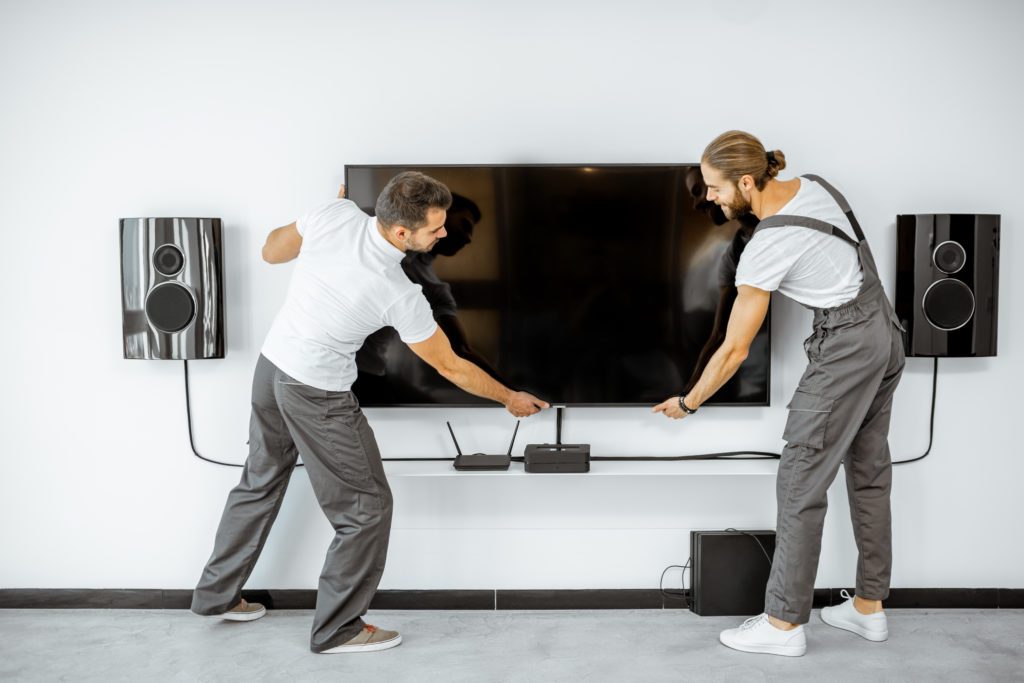Nothing soothes the soul like music or a movie after a hard day at work. So, what could be better than a house filled with such entertainment? Whether you’re building a new home or just renovating, building an AV system is a top consideration.
Having an audio and video system installed all over your home ensures that you will never be bored. The idea is that you’ll have a tv and a set of speakers in practically every room in the house, allowing you to listen to your favorite tunes or watch the daily news at any time.
Today bringing entertainment into every area of the house isn’t the laborious, costly effort as it was years ago. You can now add speakers and remote-controlled access around your home at a low cost, thanks to new technology. Even though this technology may sound very advanced, it is rather simple if you have the correct gear.
So, before you start browsing the internet with the keyword, ‘AV installer near me,’ continue reading this article to guide you on installing an AV system for your home.
- Figure Out Which Areas You Want To Set Up
Yes, you want to cover the whole house with an AV system, but will it include your backyard? You need to determine which areas you want to set up your system. Doing this will give you a better sense of the scope of work that will be done. Keep in mind that the more areas you include, the more it costs. So, make a list of all the spaces in your house and prioritize commonly-used ones. Commonly-used areas may consist of the living room, bedrooms, or kitchens. Then, ponder on the rest of the spaces if it’s worth putting up an audio and video system.
- Choose Your Preferred Source
Once you’ve chosen which rooms you’ll include when building a whole-house AV, the next thing to do is to pick an audio or video source for your system. The source is the heart of the AV system. Decide if you want a common sound source for all rooms or if separate sources should be used in different areas. Video sources could be your Blu-ray player or your cable box, while an audio source could be a CD or MP3 player, a turntable, a portable music player, or just your TV. The number of sources you choose to install depends on your decision, but keep in mind that the more sources you set, the more complex the system gets.

- Install A Multi-Room Video Receiver
A multi-room video receiver allows you to connect your cable or satellite modem, CD player, and other media sources in your living room TV and cast video to a TV in another room. So, when the weather is good, you can watch TV from your patio and have access to the same program that you would in your bedroom. Or, you can watch the news while making coffee in your kitchen and continue it on the patio while you take your daily brew in the morning.
- Decide Between A Wired Or Wireless Sound System
Generally, people preferred wired systems because they produced better quality and sound. But today, wireless technological advancements have narrowed this gap to the extent that there is only a slight variation in quality. Wireless sound systems are more practical than wired ones because they are more versatile and let you relocate their speakers without adjusting the wiring setup. They make your house also look neater and sleeker because there will be no bundles of wires concealed throughout the whole house.
The only downside of wireless systems is the price. This kind of system tends to be pricey for its convenience. So, if it’s out of your budget, stick to the wired ones.
- Manage Everything With A Home Automation System
In general, home automation refers to any group of appliances or devices that are linked to a shared network and can be operated remotely. Most home automation system providers offer basic remote control systems and applications that turn your smart device into a controller. This feature is already accessible if you installed a multi-room receiver. When you have access to a remote app, you can control content in another room and even turn off different video and audio sources.
Final Thoughts
As you can see, building a whole-home AV system may seem like a daunting task. But now that you’ve read this article, you can easily accomplish this task. Thanks to evolving technological advancements, an AV system can let you easily play your favorite songs or even watch new shows in different areas of the house. Whether you’re in the home theater or in the bedroom, you can even turn off other devices in different rooms when you don’t use them anymore.






